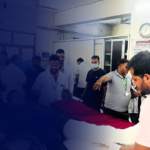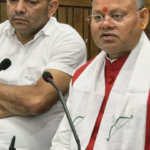On Friday, a historic mission successfully launched from Florida, signaling the end of a lengthy wait for two U.S. astronauts stranded on the International Space Station (ISS). The crewed mission, a collaborative effort between NASA and SpaceX, aims to bring back Sunita Williams and Butch Wilmore, who have been on the ISS for an extended nine-month mission.
The mission, which has been eagerly anticipated by both the astronauts and their families, marks a major milestone in the ongoing partnership between NASA and private space exploration company SpaceX. The launch took place from the Kennedy Space Center, where the Falcon 9 rocket carrying the Crew Dragon spacecraft lifted off into the sky, igniting the excitement of space enthusiasts around the world.
Both Williams and Wilmore had initially arrived at the ISS for a six-month mission, but their stay was unexpectedly extended due to delays in the transportation of new crew members and supply missions. Throughout their extended stay, they continued to work on scientific experiments, maintenance tasks, and support for the station’s operations, all while adjusting to the rigors of long-duration space travel.
The Crew Dragon spacecraft is equipped with state-of-the-art technology, offering a reliable and safe method of bringing the astronauts back to Earth after their long mission. The spacecraft is designed to return to the Earth’s atmosphere and make a safe splashdown in the ocean, where recovery teams will be waiting to retrieve the astronauts.
SpaceX’s role in this mission highlights the increasing involvement of private companies in space exploration, with NASA increasingly relying on commercial partners for crewed missions to low Earth orbit. SpaceX’s previous successes with cargo resupply missions to the ISS paved the way for the launch of crewed missions, which have now become a regular part of space operations.
The return of Williams and Wilmore is not just a scientific achievement but also an emotional moment for their families and colleagues, who have been eagerly awaiting their safe return. It also demonstrates the resilience and determination of the astronauts, who endured months of isolation and difficult working conditions to contribute to the advancement of human space exploration.
As NASA continues to push the boundaries of space exploration, the success of this mission will surely be seen as a testament to the strength of international partnerships and the promising future of human space travel.
The mission’s completion is expected to provide valuable insights for future long-duration space flights, including planned missions to the Moon and Mars, helping to ensure that astronauts can safely travel and live in space for extended periods.
With the successful launch, all eyes will now be on the safe return of Williams and Wilmore to Earth, marking another step forward in humanity’s journey into space.








